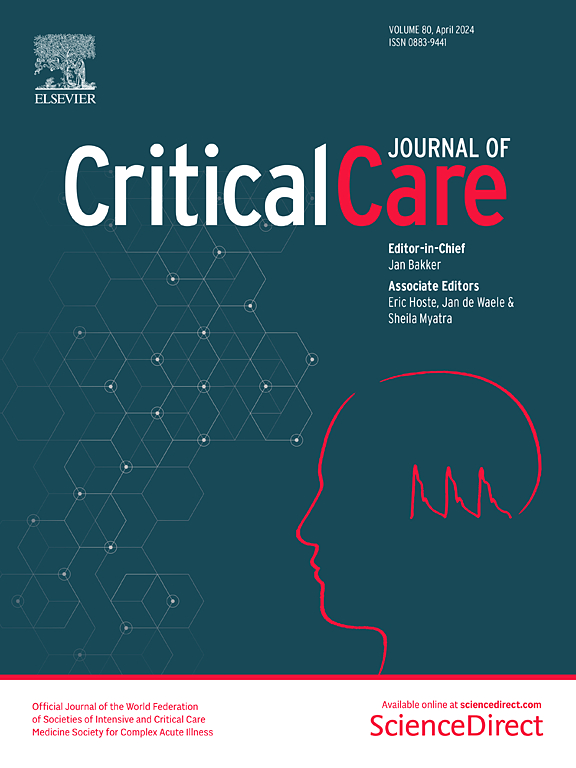Development and validation of intracranial hypertension prediction models based on radiomic features in patients with traumatic brain injury: an exploratory study based on CENTER-TBI data
IF 8.8
1区 医学
Q1 CRITICAL CARE MEDICINE
引用次数: 0
Abstract
Head computed tomography (CT) is a routinely performed examination to assess the intracranial condition of patients with traumatic brain injury (TBI), and radiological findings can help to indicate the presence of intracranial hypertension. At present, the prediction of intracranial hypertension is mainly based on manual discrimination of imaging characteristics. The aim of our study was to establish a model to predict intracranial hypertension via fully automatic CT image segmentation, rigorous radiomic feature extraction and reliable model development and validation. Patients admitted to the intensive care unit (ICU) who underwent intracranial pressure (ICP) monitoring were included in our study. For the development cohort, we extracted data from the CENTER-TBI database and randomly divided the data into a training group and a test group. For the validation cohort, we extracted data from patients admitted to the Shanghai General Hospital. Patients whose initial recorded ICP value was greater than or equal to 20 mmHg were defined as having intracranial hypertension. Radiological features, including imaging characteristics and three categories of radiomic features, were extracted from the head CT. Feature selection was performed for all radiological findings. A morphological model was built on the basis of selected imaging characteristics. First-order, second-order and third-order models were built on the basis of selected radiomic features. A comprehensive model was built on the basis of all selected radiological findings. The performances of these five models were assessed by four classifiers, including logistic regression (LR), random forest (RF), multilayer perceptron (MLP), and extreme gradient boosting (XGB), from which the best classifier was selected. After the process of model training and external validation, we ultimately used the optimal classifier to generate a prediction model with greater predictive power and stability. Five models were built, including a morphological model, first-order model, second-order model, third-order model and comprehensive model. The optimal classifier was the logistic regression (LR) classifier, with which the morphological, first-order, second-order, third-order and comprehensive models had AUCs of 0.75, 0.77, 0.76, 0.86, and 0.83 and F1 scores of 0.54, 0.73, 0.63, 0.72, and 0.75, respectively, in the external validation group. We successfully established a model for predicting intracranial hypertension on the basis of radiomic features. This model may serve as an approach for intracranial hypertension prediction in TBI patients.求助全文
约1分钟内获得全文
求助全文
来源期刊

Critical Care
医学-危重病医学
CiteScore
20.60
自引率
3.30%
发文量
348
审稿时长
1.5 months
期刊介绍:
Critical Care is an esteemed international medical journal that undergoes a rigorous peer-review process to maintain its high quality standards. Its primary objective is to enhance the healthcare services offered to critically ill patients. To achieve this, the journal focuses on gathering, exchanging, disseminating, and endorsing evidence-based information that is highly relevant to intensivists. By doing so, Critical Care seeks to provide a thorough and inclusive examination of the intensive care field.
 求助内容:
求助内容: 应助结果提醒方式:
应助结果提醒方式:


